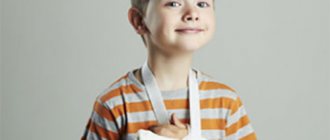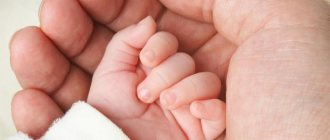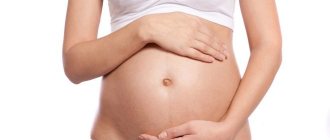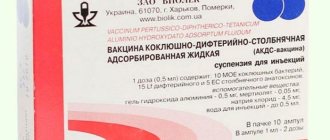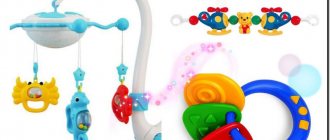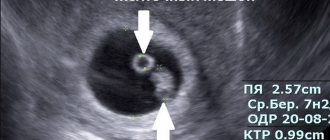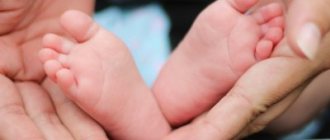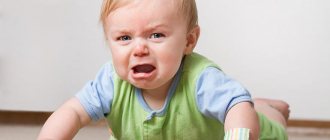Overweight in a child under 1 year of age: causes and consequences
Overweight in a child under 1 year of age: causes and consequences
If a baby gains weight well, this is not always an indicator of his healthy development. In what cases may excessive weight gain be a concern for parents and doctors?
overweight, baby food
Each child’s visit to the pediatrician includes weighing the child: this is how the doctor determines the child’s weight gain and reveals the dynamics of the baby’s development.
According to current standards for weight gain in children under 1 year of age, monthly weight should increase by an average of 600–800 g, based on birth weight. If a child gains 1 kg or more starting from 8–9 months, we are talking about excessive weight gain.
Crooked legs in a one-year-old child: causes, correction and prevention
Crooked legs in children always cause concern for parents. When is their unevenness a temporary phenomenon and a physiological norm, and when should urgent measures be taken?
Features of the children's skeleton
The child, being in the womb, is located there very compactly. His legs are tucked close to his body and slightly arched. Therefore, for the first time after birth, the lower limbs of the newborn still maintain a similar shape, gradually straightening out as muscle tone decreases.
A healthy child may have crooked legs for a whole year until the muscles and ligaments that support the skeletal bones of the lower extremities are sufficiently strengthened.
An orthopedist monitors the correct development of the musculoskeletal system during routine examinations in the first year of the baby’s life.
Since the skeleton of children is very plastic, it is important to notice slight deviations from the norm in time and correct them. It is also necessary to avoid certain mistakes in caring for the baby in the first year, so as not to provoke the development of deformities and not to bend the baby’s legs.
If your child’s legs are still crooked even at one year old, be sure to visit an orthopedist.
The specialist will examine the baby and decide whether such a curvature is a physiological age norm or requires some correction.
If a pathology is detected, it is important to immediately begin treatment and follow all the recommendations of the orthopedist. After all, a child’s crooked legs are not only an aesthetic problem:
- the child’s legs will be very tired;
- the baby will suffer from heaviness and pain in the legs;
- due to discomfort, the child will strive to limit his exercise and will not walk;
- in an attempt to reduce pain, a one-year-old child may begin to place his legs incorrectly, which will lead to deformation of the knee joints and feet;
- The child’s spine takes on serious loads, which leads to defects in its formation.
Rickets
If the signs of rickets are not noticed in time and treatment is not started, this disease can deform the child’s joints. Due to a lack of vitamin D in the first year of life, calcium deficiency occurs in bone tissue, which makes it soft. The loads that the joints experience when walking deform the bones of the lower leg, and the baby’s legs become crooked.
But such cases are quite rare, since pediatricians prescribe courses of medications containing vitamin D, depending on the child’s health condition and the time of year. If parents strictly follow all the recommendations of the pediatrician, their child will not have crooked legs:
- regular walks in the fresh air;
- course intake of vitamin D during the “sunless” months (from October to May);
- preventive massage that relieves muscle tone.
Early loads
Any motor skill a child can master strictly as his muscles strengthen. All his skills are connected, follow each other, and any unprepared “advance” can lead to deformation of the legs and other joints.
Many parents, wanting their child to master a certain skill on time or even earlier than his peers, encourage the baby to sit up before 6 months, decide to put him on his legs and encourage him to walk with support when the child is not yet ready for this.
Such exercises negatively affect the condition of the skeleton and the location of the baby’s internal organs.
If you put the child on his feet and encourage him to take his first steps at 9-10 months against the backdrop of muscular immaturity of the lower extremities, this can provoke deformation of the legs and spine.
Therefore, it is important to follow the basic rule: the baby must make any new movements in the first year himself.
The child must sit down independently and take the first steps, and it does not matter how many months this event occurs. Your task is to use certain exercises to strengthen the baby’s muscles as best as possible so that he can do everything himself .
Excess weight
Excess weight not only slightly slows down the rate at which your baby learns certain skills, but can also lead to curvature of his legs. Pediatricians, as a rule, strictly monitor children’s weight gain and give recommendations on diet so that the child’s weight can be adjusted in time and brought to normal.
Overweight children are not recommended to stand on their feet even on their own, since a large mass will affect the plastic bones of the lower leg and lead to their deformation.
Moreover, such babies should not be placed at a support ahead of schedule.
You should strengthen your baby's muscles as much as possible in the months leading up to getting on his feet, and talk to your pediatrician about taking calcium supplements to further strengthen his bones.
Heredity
Sometimes bow legs are hereditary. If the physiological deformation does not go away even after a year, and you or your relatives have “wheel” or “X” lower limbs, then it is likely that the child could have received them “by inheritance.”
Impact of shoes
Uncomfortable or tight shoes can negatively affect the gait of a one-year-old child. He will try to place his legs in a way that makes him more comfortable, but this can lead to deformation and curvature of the joints.
To avoid such a pathology, you should choose the “correct” shoes for your child at any age with a hard back, a small heel and arch support.
Do not put someone else's shoes on your child, as they have taken the shape of another child's foot and will negatively affect the development of your baby's feet.
Dysplasia
Hip dysplasia is a congenital pathology that is diagnosed in a newborn either in the maternity hospital or during the first routine examination by an orthopedist. It occurs due to vitamin deficiency, stress, bad habits, hormonal imbalances or illnesses during pregnancy.
This disease is very serious and is characterized not only by the fact that the child has crooked legs. Incorrect placement of the joints affects the internal organs of the baby and makes movements very painful.
Treatment of dysplasia lasts for several months and must be carried out strictly according to the recommendations of the orthopedist.
Wheel legs as a result of ligament spasm
A year-old child most often experiences a “wheel-like” curvature of the legs. It is associated with immaturity or abnormal development of the knee joint. The ligaments on the outer side are greatly stretched, and on the inner side they are in spasm.
To eliminate this developmental defect and straighten the legs, the orthopedist will prescribe a course of therapeutic massage. The specialist will intensively massage the outer side of the knees and lightly stroke the inner side.
With this effect on muscles and ligaments, tension can be relieved from spasmodic areas, and stretched areas can be stimulated. How many sessions you need will be determined by the orthopedist, based on the condition of the baby.
As a rule, one or two courses of therapeutic massage can ensure that the joints begin to be positioned correctly and the child’s legs are straightened.
Prevention
In order not to think about how to straighten a baby’s crooked legs, it is important to take care of his health and proper development from birth. The formation of the joints takes place along with the strengthening of the muscles and ligaments that support them, so the “straightness” of the legs will not be affected by tight swaddling . Gymnastics and timely development of motor skills will help to avoid bone curvature.
- Monitor your baby's weight and adjust it together with your pediatrician.
- From 4-5 months, with the introduction of complementary foods, try to make the child’s diet balanced.
- Do gymnastics with your baby; a massage therapist at the children's clinic will show you how to conduct sessions according to age.
- Follow all your pediatrician's recommendations and give your baby vitamin D supplements.
- Take your time to master motor skills - you can put the child on his feet when his muscles and ligaments are strong enough for this.
- Buy high-quality and correct shoes for your baby and watch his gait. Sometimes, in order to teach a one-year-old child to place his feet correctly, you can swap his shoes, so he won’t have club feet.
Source: https://NewBabe.ru/zdorove/krivye-nozhki-u-godovalogo-rebenka.html
Body weight gain of a full-term baby at 1 year of life
| Child's age | Norm: girls | Norm: boys |
| 1 month | 400–900 g | 400–1200 g |
| 2 months | 400–1300 | 400–1500 g |
| 3 months | 500–1200 | 600–1300 g |
| 4 months | 500–1100 | 400–1300 g |
| 5 months | 300–1000 g | 400–1200 g |
| 6 months | 300–1000 g | 400–1000 g |
| 7 months | 200–800 g | 200–1000 g |
| 8 months | 200–800 g | 200–800 g |
| 9 months | 100–600 g | 200–800 g |
| 10 months | 100–500 g | 100–600 g |
| 11 months | 100–500 g | 100–500 g |
| 12 months | 100–500 g | 100–500 g |
Children's mechanism of self-regulation of nutrition
A healthy child always eats as much as he needs for development and growth. It is difficult to overfeed such a baby, because what turns out to be unnecessary, he will simply vomit after feeding.
But sometimes it also happens that children periodically gain more weight than usual. This is an indicator of the creation of a nutritional reserve and that in the following months the child will gain less weight than usual.
Doctors call this phenomenon a mechanism of self-regulation of nutrition and convince parents not to worry about jumps in weight gain.
If there is excessive weight gain, the child will need to have a blood test for sugar levels and consult an endocrinologist. This should definitely be done by those who have a family history of diabetes or obesity.
Why does a child have X-shaped or wheel-shaped legs? Let's look at the reasons for curvature
Orthopedists distinguish 2 main types of deformation of the lower extremities - O-shaped and X-shaped.
The cause of curvature of the legs in a child can be factors such as:
| Causes of pathology | Curvature form | |
| Heredity | Features of the body structure, and accordingly the curvature of the legs, can be determined at the genetic level and transmitted from parents to children. Such curvature can sometimes be corrected only through surgery. | X-shape |
| Rickets | A disease associated with a lack of vitamin D in a child’s body leads to disruption of the formation and growth of bone tissue. The baby's bones become softer and bend under his weight. | Both types of deformities |
| Early loads on the lower limbs | Each age of the baby corresponds to certain skills. Many parents want their baby to quickly get on his feet or take his first independent steps. Early use of walkers or driving by hand increases the load on fragile legs and leads to their curvature. This happens especially quickly in overweight children . | X-shape |
| Osteochondrosis deformans (Blount's disease) | A congenital disorder that results in a wheel-shaped curvature of the legs. More often than others, leg deformities occur in girls who are overweight. | O-shape |
Even our grandmothers used tight swaddling to keep the baby’s legs straight. However, it has been scientifically proven that this is not true. In fact, when a newborn’s legs are tightened tightly, a dangerous disease can occur - hip dysplasia .
Features of weight gain
Despite recommendations for weight gain, pediatricians are sometimes calm about large weight jumps due to a number of factors:
- the child was born premature;
- the child was born weighing less than 2700 g;
- large child due to heredity.
But even in these cases, regular weight gain of 1–1.5 kg is abnormal, since premature and low birth weight children very actively gain kilograms only during the first 6 months of life. And children born to parents of large build only periodically demonstrate above-average weight gain.
Examination for weight loss
History and objective examination of a thin child
In most children, weight loss is due to nonorganic reasons. Upon examination, the child is pale, unhappy, and may show signs of neglect.
Bloating is observed with celiac disease and excessive consumption of orange juice.
Pigment changes = kwashiorkor.
Opportunistic infections = severe malnutrition, diabetes, immunodeficiency.
Lanugo = anorexia.
Excoriation in eczema = night itching, atopy.
Notched lips = bulimia.
Tooth erosion = bulimia and rumination.
Weakness, developmental delay = neuromuscular pathology, metabolic disorders.
Focal central nervous system symptoms, café-au-lait spots = diencephalic syndrome.
Respiratory symptoms = cystic fibrosis.
Anal changes = severe nutritional deficiencies, celiac disease, cow's milk protein intolerance.
Foul gases = malabsorption, giardiasis.
Abnormal odor = amino or organic aciduria (maple syrup = maple syrup disease, mouse odor = phenylketonuria, burnt sugar = methionine malabsorption, rancid oil = isovaleric acidemia, cat urine = p-methyl-crotonyl coenzyme A carboxylase deficiency, dead fish odor = trimethylaminuria ).
Extreme thinness = malnutrition in endemic areas or secondary to severe neglect, anorexia, lipodystrophy and premature aging syndrome.
Research on pathological thinness
Feces
Drops of fat, blood, and mucus are macroscopically detected in the stool of a thin child.
Microscopically:
- - red blood cells (informative for celiac disease, intolerance to cow's milk proteins);
- - Giardia cysts and drops of fat (giardiasis);
- - isolated steatorrhea (cystic fibrosis and Shwachman-Diamond syndrome).
Culture study of enteropathogenic Escherichia coli.
Residual substances for lactose intolerance, alactasia, hypolactasia. Amaltasia and asucrasia are also characterized by foamy stools and residual substances, and sugar chromatography can confirm this rare diagnosis.
Stool pH is often low due to bacterial fermentation or undigested food.
Urine
Microscopy and urine culture, as undiagnosed urinary infections and renal pathology (for example, posterior urethral valve) can lead to malnutrition. Residual substances in diabetes and galactosemia - further biochemical studies are indicated.
Blood test for a thin child
Complete blood count, hemoglobin, average erythrocyte volume. Microcytic anemia is a nonspecific finding with insufficient iron intake or microscopic blood loss, observed in kidney pathologies and chronic diseases. Macrocytic anemia may be secondary to vitamin B12 or folate malabsorption and steatorrhea.
Urea, creatinine and electrolytes to exclude hidden renal failure and rare metabolic disorders that cause malnutrition (for example, Barter's syndrome in hypochloremic alkalosis).
After these simple screening tests, additional tests may be required depending on the results, such as antigliadin antibodies or anti-cow's milk protein antibodies, jejunal biopsy; sweat tests or determination of immunoreactive trypsin and genetic testing for cystic fibrosis. Chromosomal analysis is indicated in the presence of any dysmorphic symptoms (ring chromosomes predispose to the development of malnutrition, in some cases of the disease there are mild dysmorphic manifestations). It may be necessary to conduct research on organic acids and amino acids, and other metabolic tests.
Chest radiography and echocardiography (EchoCG) are indicated to exclude rare asymptomatic (non-bluish and silent) heart defects, such as aberrant coronary artery disease or fibroelastosis.
Lymphangiectasia of the small intestine can be detected when performing a small intestinal enema. Cystic fibrosis in the early stages can be detected by multiple compactions of lung tissue. If a child is suspected of having an artificially caused disease, the guardian conducts a toxicological examination of blood, vomit, urine and feces.
Causes of excess weight
Causes of excess weight in breastfed children breastfed children is associated with unhealthy diet of the mother. A woman needs to stick to a diet and not overindulge in flour, fatty and sweet foods. It is important to exclude all potentially dangerous foods from the diet and replace them with healthy, but at the same time nutritious ones.
In addition, consuming foods that promote weight gain can cause allergic reactions in a child.
Causes of excess weight in formula-fed children The appearance of excess weight in formula-fed children is most often associated with an incorrect choice of formula. The fact is that some of them are intended for low birth weight children and contain a large number of calories. In this case, you need to replace the milk mixture with a less calorie one.
Causes of excess weight in children after the introduction of complementary foods
- erratic and too frequent feeding;
- non-compliance with the recommendations of the child’s age diet;
- metabolic disease;
- low mobility of the child;
- increased insulin levels in the blood;
- retention of excess water in the body;
- wrong choice of first complementary food - it should be vegetable puree, not high-calorie porridge.
Causes of hallux valgus
Why do children have X-shaped feet? This may be a congenital or acquired pathology. With unfavorable heredity, the curvature of the legs is most often caused by structural features of the child’s body, which are laid down at the genetic level. This trait is passed on from parents to children. Often this curvature can only be corrected through surgery. In this case, the legs will be “X-shaped” in a child of 2 years of age, although the pathology should already have passed by this age (with appropriate treatment). An O-shaped curvature caused by unfavorable heredity does not occur in medical practice.
As Dr. Komarovsky notes, “X-shaped” legs in a 2-year-old child are often a consequence of rickets. This disease is associated with a lack of vitamin D in the child’s body and is characterized by disorders of bone formation and mineral metabolism in bone tissue. Rickets is accompanied by multiple changes in the musculoskeletal system: not only are the legs bent, but also the flat bones of the skull are softened, the chest is deformed, and the tubular bones and spine are bent.
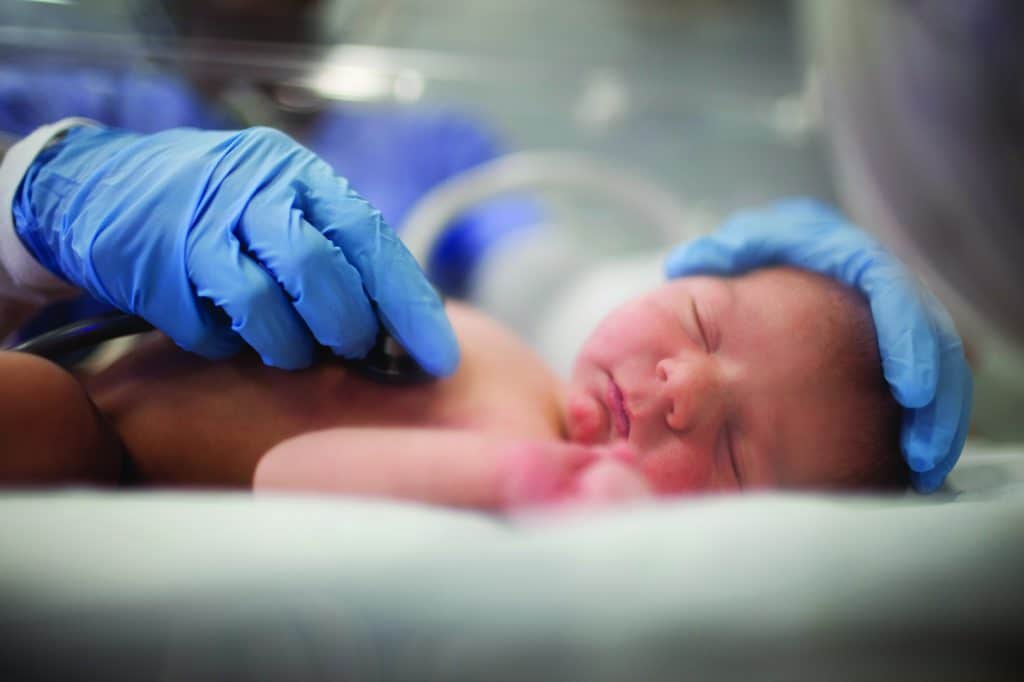
The prevalence of rickets in Russia is 80% among premature infants and 54-66% among full-term infants. Unfavorable factors that provoke diseases are gestosis in pregnant women, rapid labor, physical inactivity during pregnancy, large body weight of the child at birth, excessive weight gain, restrictions on movement patterns (tight swaddling, ignoring massage). Two or three signs of rickets are usually detected at an early age (three to four months) during an examination by a pediatrician or pediatric surgeon. Due to the fact that the symptoms are not pronounced, pediatricians suggest considering this condition as borderline. Doctors assure parents that the pathology will eliminate itself as the body matures.
The causes of hallux valgus may be weakness due to muscle hypotonia, imperfection of the ligamentous-tendon apparatus due to prematurity or intrauterine malnutrition. Possible congenital weakness of connective tissue. Often the legs are “X-shaped” in children who suffer from acute respiratory viral infections, pneumonia, and bronchitis. Disorders develop in children against the background of cerebral palsy, poliomyelitis, obesity, polyneuropathy, and muscular dystrophy.
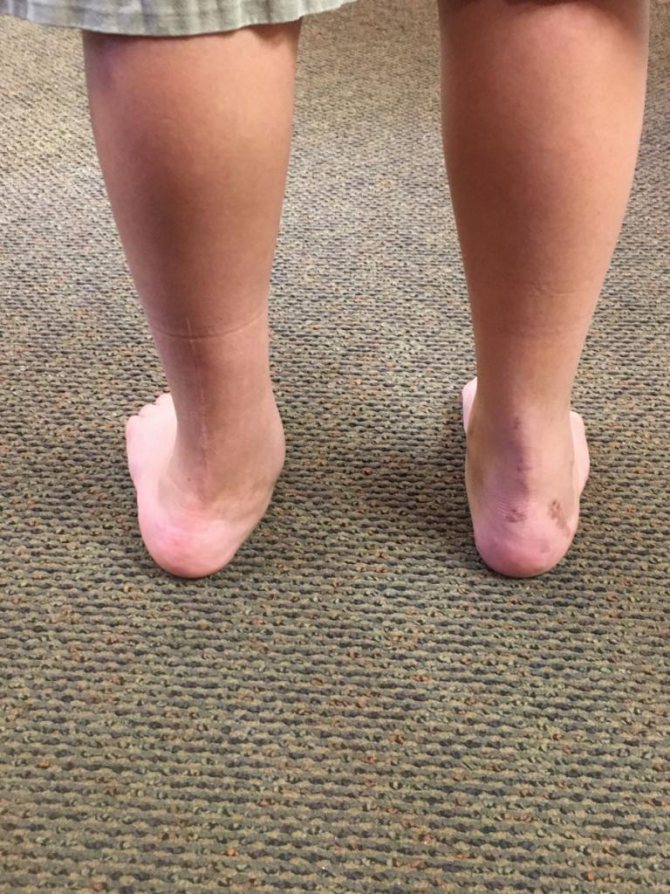
In some cases, pathology occurs after injuries to the muscles, ligaments or bones of the leg and foot, or prolonged stay of the limb in a limited state (plaster, tight swaddling). Rarely, the deformity is observed together with dysplasia or congenital hip dislocation. X-shaped legs in children who were put on their feet early can be seen quite often. Previous use of walkers, driving by hand, or incorrect selection of shoes can play a negative role (it is not advisable to buy used shoes for children that are too soft or do not support the foot well).
Healthy eating from early childhood
To ensure that the child does not suffer from excess weight in the future, it is important for parents to instill in him a culture of healthy eating from infancy. Therefore, it is advisable for all family members to eat healthy and natural products, and not those that only require defrosting and heating in the microwave.
Our recipes for children and their parents will help your family eat right and be healthy!
A child's weight exceeding the norm by 10% or more can lead to paratrophy. There are three degrees of this disease:
- 1st – with 11–20% excess weight;
- 2nd – with 21–30% excess weight;
- 3rd – with 31% excess weight and above.
Olesya Butuzova, pediatrician: “It is very important to lay the foundations of proper and healthy nutrition in the child’s eating behavior. Remember this from the moment the baby is born; such questions cannot be postponed “for later”. First, the nursing mother adheres to proper nutrition, then the child switches to this diet, receiving the correct complementary foods in accordance with age standards. Remember: properly formed eating habits largely determine the child’s future health.”
Author: Elena Nersesyan-Brytkova
The material uses photographs belonging to shutterstock.com
Important tips for valgus curvature of the heel and foot in a child aged 1, 2, 4 and 5 years
- To avoid problems in the future, it is better to take preventive measures. Let your baby run barefoot more often, especially on grass or pebbles.
- Additionally, purchase functional rugs - on our website you will find a large selection with imitation of many surfaces.
- Don’t rush to teach him to walk before he is a year old - he can get up at 15 months, nothing bad will happen. Let his legs and spine get stronger.
- If it is expensive for you to constantly undergo massage sessions, ask your doctor to teach you. And do it yourself at home.
We looked at what valgus of the feet is in children, what treatment to choose and what causes the disease. For a full explanation, you can watch the video below.
